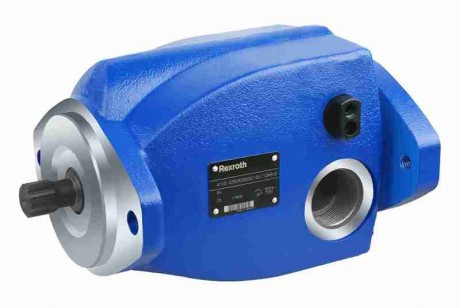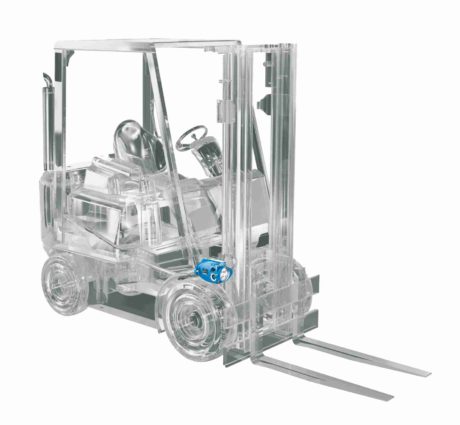Jürgen Maier –
A new variable pump for economical load-sensing in small tractors.

Reduced diesel fuel consumption yields lasting operating costs for tractors and reduces exhaust emissions.
The working hydraulics represents here a pivotal factor. In high-performance tractors we therefore see load-sensing systems with axial piston variable displacement pumps used already as the state-of-the-art.
The new A1VO axial piston pump from Rexroth, developed according to the just-enough concept, now provides for the first time the needed performance and functionality for use in smaller tractors up to 90 hp while meeting the requirements for economy and application relevance. According to realistic simulations its use results in fuel savings of at least ten percent to over 15 percent in typical load cycles, with a corresponding savings of around 10,000 liters of diesel fuel over the entire working life.
An Open-Center system
In mobile equipment such as tractors, other agricultural machines or construction vehicles, the working hydraulics provides the energy for movement. It offers high power density and with its modular design fits quite well into the tight space allowed by mobile equipment.
The hydraulic power remains consistently high over the entire ambient temperature range and it provides a variety of control possibilities for delicate moves.
The energy needed to drive the pump is passed from the diesel engine to the attached hydraulic pump through a gearbox. The pump generates the needed flow, which varies according to the consumer pressure. Typical working pressures vary between 200 and 250 bar. There are currently two approaches to the problem.
Open-center system denotes a solution often found in mobile applications. Here a constant displacement pump draws the fluid from a tank and generates the flow. When the working hydraulics is not needed, the pump returns the fluid to the tank at nearly zero pressure through a proportional valve. The hydraulic power produced depends directly on the diesel engine speed and the required working pressure. Open-center systems provide an energy advantage when agricultural machines continually demand maximum hydraulic power, since in this situation the control valves cause only minor energy losses.
In the case of highly varying hydraulic loads, however, simple open-center systems work much less efficiently.
Flow control proportional to the diesel engine speed means that often more volume is generated than actually needed. In smaller tractors up to 90 hp economic considerations result these days in use of the open circuit in its simplest form using a gear (constant-type) pump.
In practice, drivers often set the highest speed when requiring hydraulic motion so as to always have the maximum output from the diesel engine available, even if the hydraulics do not need it in order to carry out the desired movement. This results in unnecessarily high diesel fuel consumption, since the pump is moving more fluid than actually required.

Load Sensing: Demand-based flow control
Load-sensing systems consist in their simplest form of a variable displacement pump, the control valves and the hydraulic actuators. The pump generates the needed flow based on the differential pressure. A pressure compensator consisting of control valves controls the swivel angle of the variable pump based on the diesel engine speed. Once the saturation point is reached, the pump swivels back to the minimum needed flow. As soon as the working hydraulics demands more volume, the swivel angle change increases the flow.
This load-sensing system ensures that only the required power demand is drawn from the diesel engine.

In high-end tractors with more than 180 hp load-sensing systems have been the global standard for years.
They ensure demand-based flow control in the system even for parallel movements by multiple consumers, thereby ensuring higher productivity. They also work more energy-efficiently in partial-load conditions. More and more manufacturers are implementing this principle even in the middle power class of 110 to 180 hp. Another key driver for this trend is the TIER 4 final exhaust gas standard. This demands significant modifications to engine technology, with rpm reductions as well as increased efficiency of the hydraulic systems. Here load-sensing systems make an important contribution.
Their use means manufacturers can operate the diesel engine at lower rpm’s or use smaller engines. Both approaches result in reduced emissions and fuel consumption.
The axial piston pumps available on the market cover the corresponding power demands for large- and medium-size tractors on a fine scale. High variation in functionality means the manufacturers can implement individualized solutions. At the same time the electronic controller is taking on greater significance in mobile hydraulics. This moves functionalities which used to be performed by purely hydraulic means to the software realm. Rexroth is advancing the networking of electronic hydraulic control with the diesel engine ECU in order to fully exploit the advantages of on-demand control.



